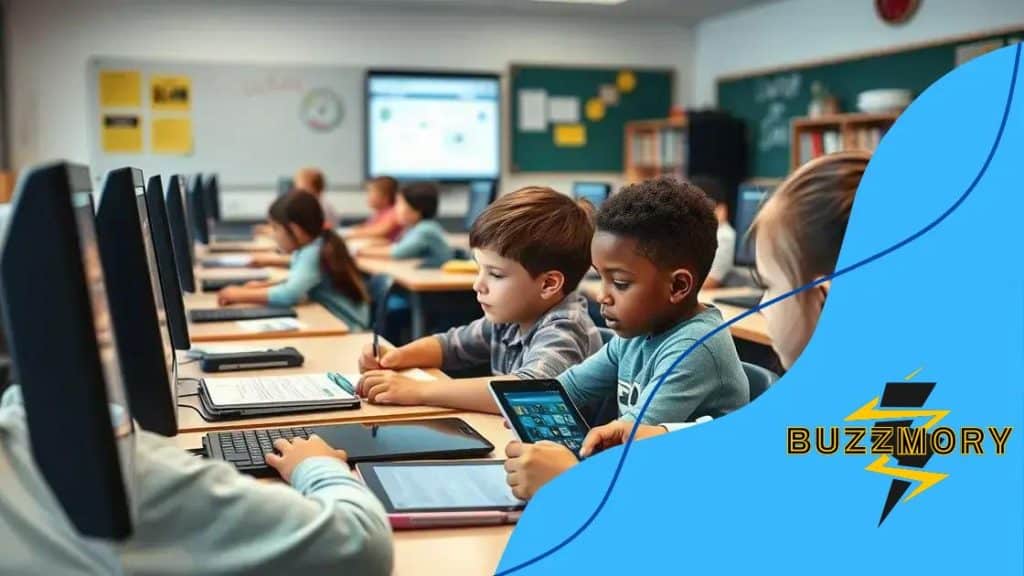The importance of digital literacy education in schools

The importance of digital literacy education in schools lies in equipping students with essential skills for navigating technology, enhancing their research, communication, and critical thinking abilities, while ensuring their safety in the digital world.
The importance of digital literacy education in schools is becoming increasingly clear as technology evolves. Have you noticed how essential it is for students to navigate digital landscapes effectively? In this article, we’ll delve into its significance and what it means for today’s learners.
Understanding digital literacy in the modern world
Understanding digital literacy in the modern world is crucial for students today. With technology playing a central role in our daily lives, it’s essential for learners to become proficient in using digital tools. This proficiency not only enhances their academic skills but also prepares them for future careers.
What is Digital Literacy?
Digital literacy refers to the ability to locate, evaluate, and use information effectively. It goes beyond just using a computer or accessing the Internet. It involves understanding how to critically analyze online content, communicate effectively using digital platforms, and navigate digital spaces safely.
Why is It Important?
This skill set supports students in numerous ways. For instance, it enables them to:
- Identify credible sources of information.
- Utilize technology for innovative problem-solving.
- Engage in online collaboration with peers.
Digital literacy also contributes to overall academic success. When students are equipped with these skills, they can approach assignments with confidence and creativity, sourced from reliable online materials. Additionally, digital literacy promotes lifelong learning, allowing individuals to adapt as technology evolves.
Various tools can assist in building digital literacy. Educational programs and resources can help students practice these skills in a safe environment. As technology continues to advance, schools must prioritize teaching digital literacy to ensure students can navigate future challenges effectively.
Key benefits of teaching digital literacy
Teaching digital literacy provides a multitude of benefits that extend well beyond the classroom. As students become proficient in navigating digital spaces, they gain vital skills for their academic and personal lives. This knowledge equips them to face challenges in an increasingly technology-driven world.
Enhanced Research Skills
One of the key benefits of teaching digital literacy is that students learn to conduct effective research. They become adept at evaluating the credibility of sources and understanding how to filter relevant information. This capability is essential for completing assignments and projects accurately.
- Identifying reliable online resources.
- Understanding the importance of citations.
- Cultivating critical thinking skills.
As students develop these skills, they gain confidence in their ability to gather and synthesize data, leading to richer educational experiences.
Improved Communication
Another significant advantage is the enhancement of communication skills. Through digital platforms, students engage in various forms of communication including email, discussion forums, and social media. These experiences help them express ideas clearly and collaborate effectively with peers.
Furthermore, strong digital literacy allows students to adapt their communication styles depending on the medium and audience. This adaptability is increasingly important in both academic and future workplace settings.
Moreover, a solid foundation in digital literacy gives students the tools to showcase their work creatively, whether through presentations or digital portfolios. As they master digital communication, they become better prepared for teamwork and networking opportunities.
Teaching digital literacy also fosters a sense of digital citizenship. Students learn about ethical online behavior, including respecting copyright and maintaining privacy. This understanding is crucial for navigating the complexities of the digital world responsibly.
Strategies for effective digital literacy education

Implementing effective strategies for teaching digital literacy is essential for creating students who are well-prepared for the future. These strategies help educators ensure that their students can navigate the digital world confidently and competently.
Incorporate Hands-On Learning
One effective strategy is to incorporate hands-on learning experiences. Allowing students to work directly with technology fosters engagement and practical skills. For instance, arranging group projects where students create presentations can enhance their understanding of digital tools.
- Encouraging collaboration through shared digital platforms.
- Facilitating workshops on software applications.
- Organizing coding activities.
Such practical applications not only enhance learning but also build teamwork skills, making lessons more memorable and impactful.
Use Real-World Applications
Integrating real-world applications into lessons allows students to relate their learning directly to their lives. Educators can introduce scenarios where digital literacy is necessary, such as online research or using social media responsibly. This makes learning relevant and engaging.
Teachers could assign projects requiring online research about environmental issues or current events. This gives students a chance to practice critical evaluation of information while helping them understand the importance of digital literacy in everyday life.
Using current events also promotes discussion about online ethics and the importance of digital citizenship. Students learn to recognize misinformation and cultivate the skills to discern credible sources.
Foster a Supportive Learning Environment
A supportive environment encourages students to ask questions and seek assistance when they face challenges. Teachers should adopt an encouraging approach, making room for exploration and experimentation with digital tools.
Providing resources such as tutorial videos or one-on-one mentoring can greatly enhance students’ confidence in using technology. This support can make all the difference in helping students navigate their digital education journey successfully.
Overcoming challenges in digital literacy implementation
Overcoming challenges in digital literacy implementation is crucial for effective education. Schools face various barriers that can hinder the successful teaching of these essential skills. Identifying and addressing these challenges can help create a more robust learning environment.
Limited Access to Technology
One major challenge is limited access to technology. Not all students have equal access to computers and high-speed internet at home. This discrepancy can create a gap in digital literacy skills between students from different backgrounds.
- Schools should provide resources like laptops and tablets for student use.
- Offering after-school programs can ensure all students have opportunities to practice digital skills.
- Partnering with local businesses for sponsorship can help schools obtain necessary technology.
By addressing access issues, educators can create a more inclusive digital literacy program.
Teacher Training and Support
Another significant obstacle is the need for continuous teacher training. Teachers may not feel confident or knowledgeable enough to teach digital literacy. Providing ongoing professional development is essential in this context.
Workshops that focus on the latest technologies can help teachers stay informed. Furthermore, pairing less experienced teachers with tech-savvy colleagues can foster collaboration and mentorship.
Cultural Resistance to Change
Cultural resistance to adopting new teaching methods is also a common challenge. Some educators and parents may be hesitant to embrace digital literacy initiatives. To combat this, it’s essential to communicate the importance of these skills clearly.
Organizing community meetings can help involve parents in discussions about the benefits of digital literacy. Sharing success stories from other schools can also demonstrate the positive impact of technology integration.
Ultimately, addressing these challenges requires commitment and collaboration from educators, parents, and the community. By fostering an environment that values digital literacy, schools can ensure their students are adequately prepared for the future.
Future trends in digital literacy for students
Future trends in digital literacy for students are evolving rapidly as technology continues to advance. Understanding these trends is essential for educators to keep their teaching methods effective and relevant. As the digital landscape changes, so too must the strategies we use to educate our students.
Integration of Artificial Intelligence
One significant trend is the integration of artificial intelligence (AI) into learning environments. Tools powered by AI can personalize learning experiences for each student. This technology adapts to individual learning styles, enhancing engagement and comprehension.
- AI tutoring systems can provide instant feedback on assignments.
- Chatbots can assist students in finding resources and answering questions.
- Data analytics can help teachers identify students who may need extra support.
By leveraging AI, educators can provide tailored support that meets the unique needs of every learner, making digital literacy education more effective.
Emphasis on Cybersecurity Education
Another important trend is the growing emphasis on cybersecurity education. As students become more active online, understanding how to protect their personal information is vital. Schools are increasingly incorporating teaching about online safety and digital citizenship into their curricula.
Students learn about secure passwords, recognizing phishing attempts, and understanding privacy settings. This knowledge not only enhances digital literacy but also equips students to navigate the online world safely.
Collaborative Learning Environments
Collaboration is becoming a central feature of digital literacy education. Tools that enable students to work together on projects, regardless of location, are on the rise. These collaborative platforms help students develop teamwork skills while promoting digital problem-solving.
Educators can create assignments that require students to use these tools effectively. This type of engagement prepares students for a future where collaboration across distances is common.
Moreover, focusing on project-based learning allows students to apply their digital literacy skills in practical situations, further enhancing their learning experience.
FAQ – Frequently Asked Questions about Digital Literacy Education
What are the benefits of teaching digital literacy to students?
Teaching digital literacy prepares students for success in school and future careers by enhancing their research, communication, and critical thinking skills.
How can AI be integrated into digital literacy education?
AI can personalize learning experiences by adapting to students’ individual needs and providing instant feedback on their progress.
Why is cybersecurity education important for students?
Cybersecurity education helps students understand how to protect their personal information online, making them safer digital citizens.
What are some effective strategies for implementing digital literacy programs?
Effective strategies include hands-on learning, real-world applications, and fostering a supportive environment for exploration and practice.





